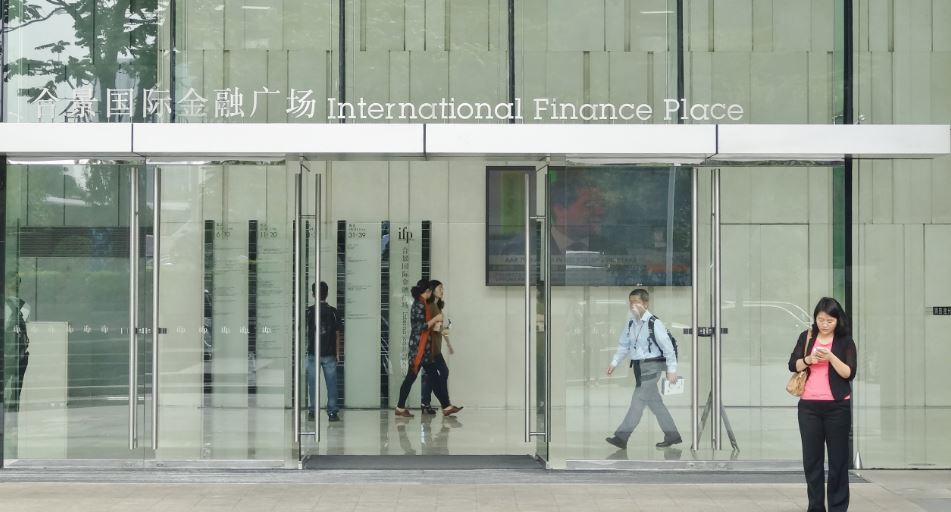Total global debt has increased, growth has been slowing down since the onset of the global financial crisis in 2007 and has been rapidly decelerating after 2012. This may be a sign that the world has arrived at its debt carrying capacity or has even crossed it, meaning that capitalism is probably already insolvent.
With my June 2015 HT Parekh Finance Column article titled “When Will the Next Financial Crisis Start?” (Öncü 2015a) I initiated an investigation of the possibility of a new phase in the ongoing global financial crisis (GFC) that started in the summer of 2007. [This article was retitled on the PRIME website as “What Straw Will Break the Finance Sector’s Back?” when it was republished three days later (Öncü 2015b).]
The next two articles in the series were my February 2016 article titled “Has the Crash of the Global Financial Markets Begun?” (Öncü 2016a) and November 2016 article titled “It’s the Private Debt, Stupid!” (Öncü 2016c).
The current article is the fourth in the series and its title is inspired by the latest first quarter (Q1) report of the Institute of International Finance (IIF), a respected tracker of global leverage statistics.
Time will tell whether this article will be the last in the series or not as financial markets have a way to put even the best forecasters to shame.
Total Global Debt
In this Q1 report, the IIF documented that the total global debt hit a new all-time high of $217 trillion or about 327% of the global economic output, that is, world gross domestic product (GDP). This is an alarming total debt to GDP ratio.
Furthermore, the report also indicated that while the financial sector debt issuance—although supplemented by money created by major central banks—has moderated in recent years, the total global debt of the non-financial sector has continued to grow and hit an all-time high of $160 trillion or about 242% of world GDP as of Q1 of 2017.
Recall that when the total global non-financial sector debt reached $152 trillion or about 225% of the world GDP at end of 2015, the International Monetary Fund (IMF)
issued a stark warning to the world that the sheer size of the non-financial sector debt—comprising the general government, non-financial firms and households—could set the stage for an unprecedented private deleveraging process that could thwart the fragile economic recovery of the world, indicating the difficulty of resolving the “private debt overhang” problem in the current global environment of low nominal output growth. (Öncü 2016c)
Table 1 gives a summary of the total global debt at five-year intervals between 2002 and 2017, and shows that this ratio did not become alarming just in the Q1 of 2017. It has been alarming for at least a decade.
Is Capitalism Insolvent?
The IIF said in this report that rising debt “may create headwinds for long-term growth and eventually pose risks for financial stability.”
It is puzzling that the IIF is saying this only now. Is this not what has been happening since the onset of the GFC in the summer of 2007? Has global economic growth not been dismal since 2007 to this day or is a 10-year period not long-term enough?
Have we not experienced at least two major phases of the GFC, one originated in the United States (US) mortgage market in 2007 and then spread to the rest of the world, the other originated in Greece in 2010 and then spread through Europe with spillover effects in the rest of the world?
Table 1 also shows that although the total global debt has increased in the period steadily, growth has been slowing down since the onset of the GFC in 2007 and has been rapidly decelerating after 2012. This may be a sign that the world has arrived at its debt carrying capacity or even crossed it, meaning that capitalism is insolvent already.
And, if this is the case, then a global deleveraging accompanied by increasing delinquencies and defaults will accelerate. Indeed, delinquencies and defaults have been accelerating around the globe in recent years. As Indians and Italians know quite well, their banks are already suffering from bad loans severely, and India and Italy are not the only two countries where this is happening.
Developing Country Debt
According to the earlier mentioned IIF report, while advanced economies continued to deleverage and reduced their total debt by over $2 trillion in the past year, developing countries increased their total debt by $3 trillion, bringing their total debt stock to $56 trillion. This is equivalent to 218% of their combined GDP, five percentage points above that percentage in theQ1 of 2016.
China alone borrowed $2 trillion of this $3 trillion and brought her total debt stock to $33 trillion with the country’s total debt to GDP now surpassing 300%. More importantly, slightly more than two-thirds of China’s total debt owed by her non-financial private sector, and her non-financial corporate sector owed slightly more than 75% of this non-financial private sector debt, with the rest belonging to households.
Furthermore, the IIF reported that the emerging market countries increased their hard currency-denominated debt by $200 billion in the past year and, despite the recent dollar strength, 70% of this has been in dollars. The total hard-currency denominated debt of the emerging market countries was slightly above $6.5 trillion at the end of 2016.
The IIF also reported that emerging markets had over $1.9 trillion of bonds and loans falling due before the end of 2018 with the biggest redemptions to be made by China, Russia, Korea and Turkey, and added that the rollover risk was high.
Meanwhile the Equities
Recall from my February 2016 article (Öncü 2016a) that Bloomberg data showed that the world equity markets made their highest peak at $73.1 trillion on 14 June 2015 and from there gradually crashed to $58.7 trillion by 31 January 2016. [1] Bloomberg data show that global stocks had continued to struggle until 23 June 2016—that is, until Brexit (Öncü 2016b)—after which they started to recover.
The recovery gained speed about a month after the election of Donald Trump as the President of the US and has been impressive after his inauguration on 20 January 2017. The world equity markets gained $4.8 trillion in Q1 of 2017—the largest quarterly gain since 2012—and closed the quarter at $71.6 trillion.
Although the performance of the advanced economy equity markets had walked in tandem with the global equities (as expected since they dominate the global equity markets), the performance of the emerging market economy equity markets has been phenomenal. Since the turn of the year, emerging market economy equity markets have outperformed advanced economy equity markets by at least 5%, returning more than 15% in the first half of 2017.
Given the dire signs of a fast-approaching global recession and possibly the third phase of the GFC, offering an explanation for why any of these have happened is beyond me. I will not claim that the third phase of the GFC or a global recession will start shortly, but I would not mind taking credit if one of them happens.
And, if one of them happens, the other will follow. Let this be my prophecy.
Janet Yellen’s Prophecy
In comments at the British Academy in London on 27 June 2017, US Federal Reserve Chair Janet Yellen prophesied that the US financial system was much safer and sounder, and that a crisis like the one in 2008 was unlikely “in our lifetime.”
She prophesied this only 19 days after the House of Representatives of the US passed the Financial Creating Hope and Opportunity for Investors, Consumers and Entrepreneurs (CHOICE) Act. If this act becomes law, it will replace much of the Dodd–Frank Act passed by the Obama administration in 2010 as a response to the GFC. Despite the questionable success of the Dodd–Frank Act, the CHOICE Act will remove most of the safety valves the Dodd–Frank Act attempted to put in place.
Furthermore, Yellen prophesied this only about a week before the Office of the Comptroller of the Currency of the US published its Q1 2017 derivatives report. This report showed that the top-25 US holding companies with derivatives had a total derivatives exposure of $242.2 trillion whereas the said amount was $160.2 trillion one quarter before the start of the GFC in 2007 and $194.3 trillion one quarter before the Lehman collapse which made the crisis global in 2008.
Since no one debates the crucial role the derivatives played at the onset of the GFC, I can safely say that the situation is worse than it was in either 2007 or 2008.
There are a multitude of other troubles from around the globe that I cannot list because of the shortage of space, but let me respond to Yellen’s prophecy as follows:
Debts that cannot be paid will not be.
Note
[1] Bloomberg World Exchange Market Capitalisation in US dollars—WCAUWRLD—Index, weekly data.
References
Öncü, T Sabri (2015a): “When Will the Next Financial Crisis Start?” Economic & Political Weekly, Vol 50, No 24, pp 10–11.
(2015b): “What Straw Will Break the Finance Sector’s Back?” Policy Research in Macroeconomics, 16 June, http://www.primeeconomics.org/articles/when-will-the-next-financial-crisis-start-what-straw-will-break-the-finance-sectors-back.
(2016a): “Has the Crash of the Global Financial Markets Begun?” Economic & Political Weekly, Vol 51, No 7, pp 10–11.
(2016b): “Is Brexit Moment a Lehman Moment? Fear Factor in Financial Crises,” Economic & Political Weekly, Vol 51, No 29, pp 10–11.
(2016c): “It’s the Private Debt, Stupid!” Economic & Political Weekly, Vol 51, No 46, 12 November, pp 10–11.
T. Sabri Öncü ([email protected]) is an economist based in Istanbul, Turkey. This article first appeared in the Indian journal Economic & Political Weekly on 15 July 2017






